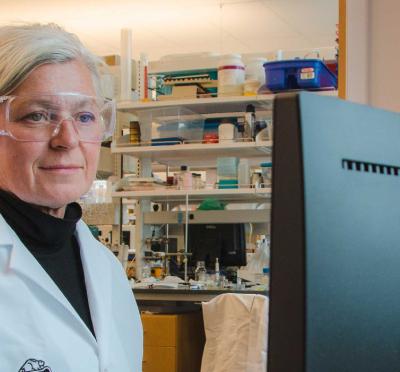Lauren Crandon (’18 Ph.D., Environmental Engineering) was eager to work at a startup after graduation because she loves the fast-paced feel.
“Every day is different, and you’re able to get involved in every aspect. You may be writing a research paper, performing an economic analysis, or in the lab running experiments,” said Crandon, now a research engineer at OnTo Technology, where her research team recently earned a Phase 1 lithium-ion battery recycling prize from the Department of Energy. “I like working as part of a team with this momentum behind us and not a lot of red tape. We have opportunities to develop new intellectual property with our innovation.”
She began working with OnTo as part of the ONAMI Graduate Internships in Startups Program, encouraged by one of her academic mentors, Skip Rochefort, associate professor of chemical engineering, who recommended her to the program.
“In addition to my research, I was a teaching assistant for Dr. Rochefort, and working with him and his students got me interested in research that addresses real-world problems,” Crandon said.
Originally from Kansas, Crandon earned her chemical engineering degree at the University of Kansas, where she became interested in environmental engineering and began to investigate doctoral programs.
She fell in love with Oregon State’s collaborative approach to cutting-edge research. During her first research rotation, she met Stacey Harper, associate professor of environmental engineering, who was looking at what happens to nanoparticles after we use them. Harper became her research advisor and another important mentor.
“I was really impressed with the interdisciplinary feel of her lab and the opportunities for unique research,” she said. “Dr. Harper was really good about giving us the tools to communicate our research and to think outside the box when developing new methods — to really push the boundaries. I still use all of those today.”
During her time at Oregon State, Crandon served as a student representative to the Pacific Northwest Chapter of the Society of Environmental Toxicology and Chemistry Board of Directors — another experience she said prepared her for startup culture.
“I helped plan the annual meeting with representatives from industry, academia, and government, so I learned to communicate with people from all three sectors,” she said. “These were really meaningful interactions, because in a startup you have to wear a lot of hats and attend a lot of meetings. I feel confident in my communication abilities.”
She encourages other students and graduates to explore battery science, “an area of huge need that requires engineers with a good understanding of the problems and the capacity to develop innovative solutions.” She credits the tools and mentorship she received from Oregon State with helping her transition smoothly into the field.
Industry has struggled to find an efficient, economical way to recycle lithium-ion batteries. This is a problem of increasing importance, due to the prevalence of consumer electronic products and, especially, electric cars that depend upon the high energy-density of lithium-ion batteries. Crandon and her OnTo group developed an award-winning approach to sorting cathode chemistries.
Instead of traditional recycling methods that involve smelting the battery’s cathode or dissolving it in acid, OnTo takes a more efficient approach. The company’s technique works to “heal” cathodes with a process that repairs the structure and relithiates the cathode.
“Basically, at the end of its life, the most valuable component of a lithium-ion battery is the cathode,” Crandon said. “When recycling these batteries, we first address safety issues, like flammability. We developed a method to deactivate batteries using supercritical carbon dioxide, which renders them inert. Removing the active lithium and electrolyte makes recycling safer and cheaper.”
OnTo’s approach addresses one of the major hurdles to this type of recycling, as identified by DOE: differences in cathode chemistries.
“We have a technique to sort batteries before you cut them open for recycling,” Crandon said. “With our approach, you can rapidly measure intrinsic properties related to format and chemistry to distinguish between cathode chemistries.”
With her team one of only 15 winners of the Phase 1 DOE prizes, Crandon said the visibility and partnership opportunities they’ve gained have been encouraging. The research team is now planning for Phase 2, looking for manufacturing partners to produce a prototype and incorporating automation.



